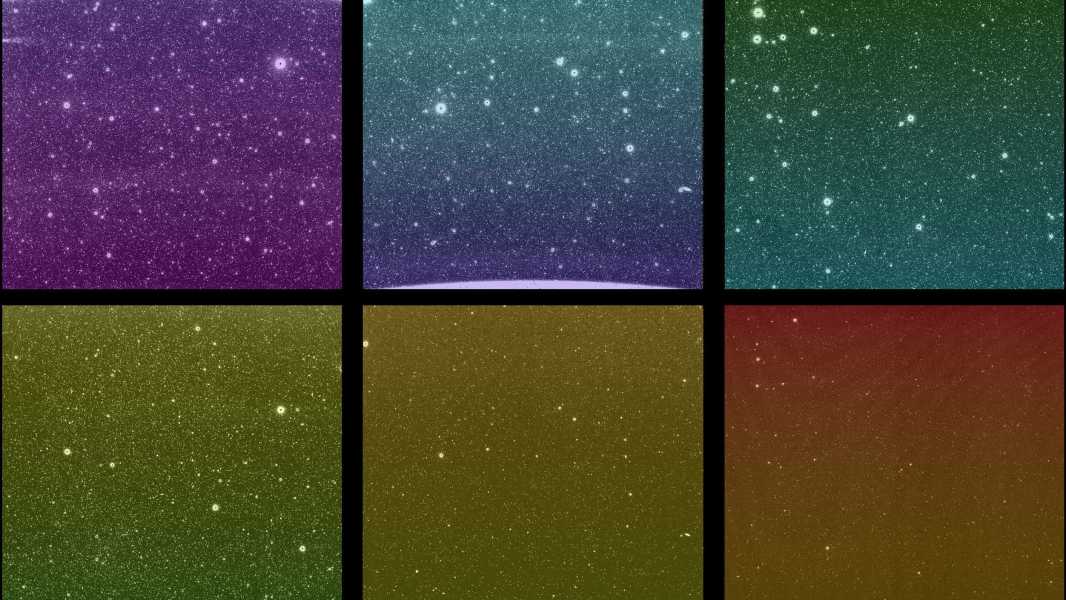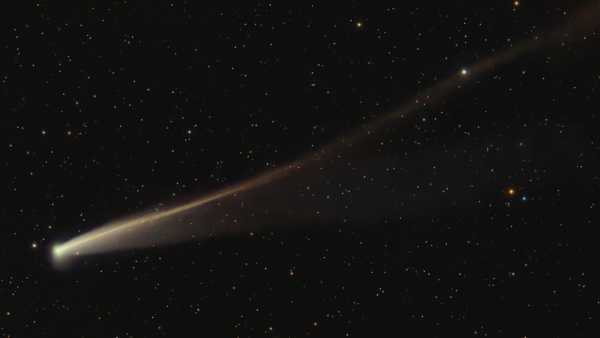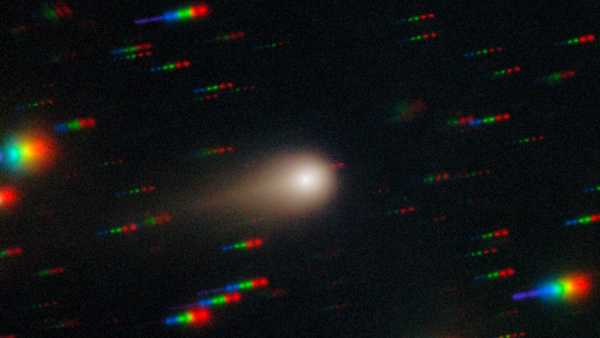
The full field of view of SPHEREx includes the top three images, while the bottom three show the same patch of sky at different wavelengths. (Image credit: NASA/JPL-Caltech)
NASA's new space telescope has activated its detectors for the first time, capturing first light in images of tens of thousands of galaxies and stars.
The Spectrophotometer for the Study of the History of the Universe, Epoch of Reionization, and Ice Exploration (SPHEREx) was launched into orbit by a SpaceX Falcon 9 rocket on March 11.
The six images released by the space telescope on March 27 were taken using three different detectors. The top three images cover the telescope's entire field of view and are repeated in the bottom three, which are colored differently to represent different ranges of infrared wavelengths.
Within the full field of view of each image—an area about 20 times wider than the full Moon—about 100,000 light sources from stars, galaxies, and nebulae can be detected.
“Our spacecraft has opened our eyes to the universe,” said Olivier Doré, a SPHEREx project scientist at Caltech and NASA’s Jet Propulsion Laboratory, in a statement. “It’s working as it was designed to.”
At a total cost of $488 million to build and launch, the new telescope has been in development for about a decade and is designed to map the universe by observing both optical and infrared light. It will orbit the Earth 14.5 times a day, or 11,000 times over its lifetime, to filter infrared light from distant gas and dust clouds using a technique known as spectroscopy.
Once fully operational in April, SPHEREx will scan the entire night sky a total of four times using 102 separate infrared color sensors, allowing it to collect data from more than 450 million galaxies over its planned two years of operation. That amounts to about 600 exposures each day, according to NASA.
This dataset will provide scientists with important insights into a number of key questions in cosmology, allowing astronomers to study galaxies at different stages of their evolution; track ice trapped in empty space to see how life might have begun; and even understand the period of rapid inflation the Universe experienced immediately after the Big Bang.
SPHEREx's wide panoramic view makes it an ideal complement to the James Webb Space Telescope, highlighting areas of interest to the latter for deeper study and resolution.
After the telescope was launched into space, NASA scientists and engineers performed a series of complex checks on the new telescope. In particular, they made sure that its sensitive infrared equipment was cooled to a final temperature of about minus 350 degrees Fahrenheit (minus 210 degrees Celsius) and that the telescope was focused correctly—something that is impossible to do in space.
Judging by these stunning preview images, it looks like everything worked out.
“This is the pinnacle of the spacecraft’s validation; it’s what we’ve been waiting for,” Beth Fabinski, SPHEREx deputy project manager at JPL, said in a statement. “There’s still a lot of work to do, but this is a significant success. And wow! Just wow!”
TOPICS James Webb Space Telescope spacex

Ben TurnerNavigate Social LinksSenior Staff Writer
Ben Turner – Staff Writer
Sourse: www.livescience.com





